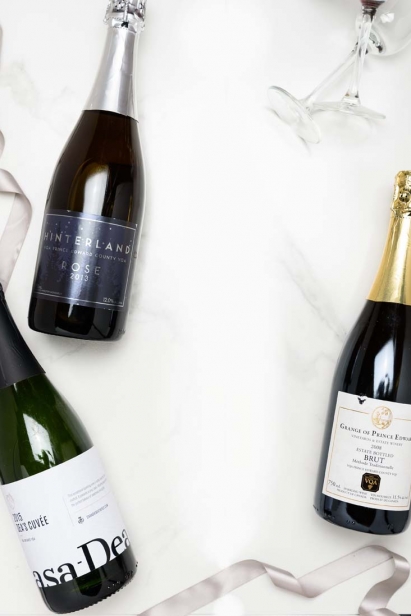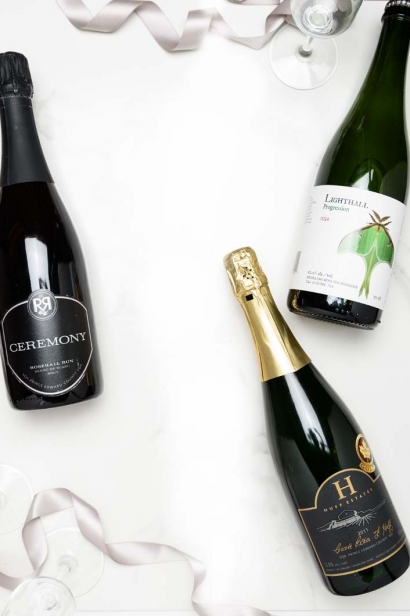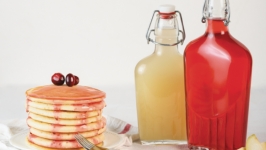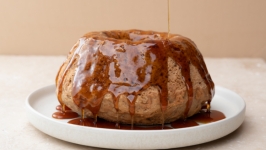Tiny Bubbles
As we pop the cork to celebrate Christmas, ring in the new year or join friends for dinner on a Saturday night, filling our glasses with the tiny, delicate bubbles, the roots of that bottle of sparkling wine — the vines — are already buried under a mountain of soil to protect them from Jack Frost or worse, Old Man Winter.
Prince Edward County's climate can be harsh on winemakers. The growing season is short; it is not as hot and dry as the grapes would often prefer, and winter requires growers to take costly and timeconsuming measures to protect the vines. But because the grapes take longer to ripen and are harvested young, the resulting acidity, combined with the minerality that comes from the limestone soil, similar to those in France's Burgundy and Champagne regions, is ripe for sparkling wines.
Winemakers in the county primarly use two methods to produce the fine bubbles in their wines — traditional or tank method — and numerous grape varietals to offer a range of flavour profiles. The traditional method is used to make Champagne and Cava. After the initial fermentation, the still wine undergoes a second fermentation in the bottle, using a tirage (a mixture of yeast and sugar) to get things started.
The wine is typically aged for a minimum of 15 months and the bottles are turned by hand periodically to allow the sediment of lees (yeast cells) to collect in the neck of the bottle before being removed.
Characteristics of sparkling wines made using the traditional method are often described as having nutty or bread-like notes — brioche, toasted almond and biscuit — derived from aging longer on the lees.
The tank method, also known as Charmat method, is used most noteably to make Prosecco. In the Charmat method, the wine is fermented with the tirage in a stainless steel, pressure-resistant tank called an autoclave. It is here that the carbon dioxide released during the second fermentation is trapped, creating pressure and bubbles, before being bottled.
Characteristics of sparkling wines made using the Charmat method are often described as fresh and crisp with notes of tart fruit — lemon and green apple.
Casa-Dea Estate Winery
Cuvée, 2015 | Charmat method | $19
A nice balance of acidity and sweetness
This wine is made with 100-per-cent Chardonnay and Pinot Noir grapes grown in Casa-Dea's Cold Creek vineyard, which founder, Domenic Di Pietrantonio, started in 2000. Now with more than 65 acres of planted vines, Casa-Dea is one of the few wineries capable of producing true county VQA wines.
Grange of Prince Edward
Estate Bottled Brut, 2008 | Traditional method | $30
Notes of baked apple and brioche on the nose
Grange of Prince Edward Vineyards and Estate Winery, led by Caroline Granger and her daughter, Maggie, is set on the family's idyllic property. It has been in the family as a working farm for more than 200 years and Caroline transformed it into the winery it is today, producing 100-per-cent estate-grown wines.
Hinterland Wine Company
Rosé, 2013 | Traditional method | $38
A nose and palate reminiscent of strawberries and brioche
Understanding the county's climate and terroir, Jonas Newman and Vicky Samaras knew the conditions were right to focus on sparkling wines from the beginning. No wonder their sparkling wines top the wine lists of many fine restaurants in the region. And new this year is a limited-run charmat-method cider.
Huff Estates Winery
Cuvée Peter F. Huff, 2011 | Traditional method | $40
Fresh and crisp with notes of orange blossom and pear Huff Estates is one of the best-known wineries, with its on-site restaurant, inn and art gallery. Using a blend of Chardonnay and Pinot Noir, this award-winning wine has rested on the lees for four years, resulting in complex flavours and a fine mousse.
Lighthall Vineyards
Progression, 2014 | Charmat method | $20
A refreshing nose of citrus, white pear and apple peel
Lighthall's Progression is made from estate-grown Vidal grapes. While owner and winemaker, Glenn Symons, is well-versed in Charmat method (he ferments wines for many local wineries), he recently won awards for his 2011, Culmination, a traditional-method sparkling wine using 100-per-cent Chardonnay.
Rosehall Run
Ceremony Blanc de Blanc Brut | Traditional method | $35
Aromas of poached pear, apple and honeydew
With a name befitting of the holidays, Ceremony is Rosehall Run's first traditional-method sparkling wine. Using 100-percent, estate-grown Chardonnay of blended vintages, this wine is versatile and pairs well with fresh seafood — oysters, calamari — and herb-roasted chicken.









